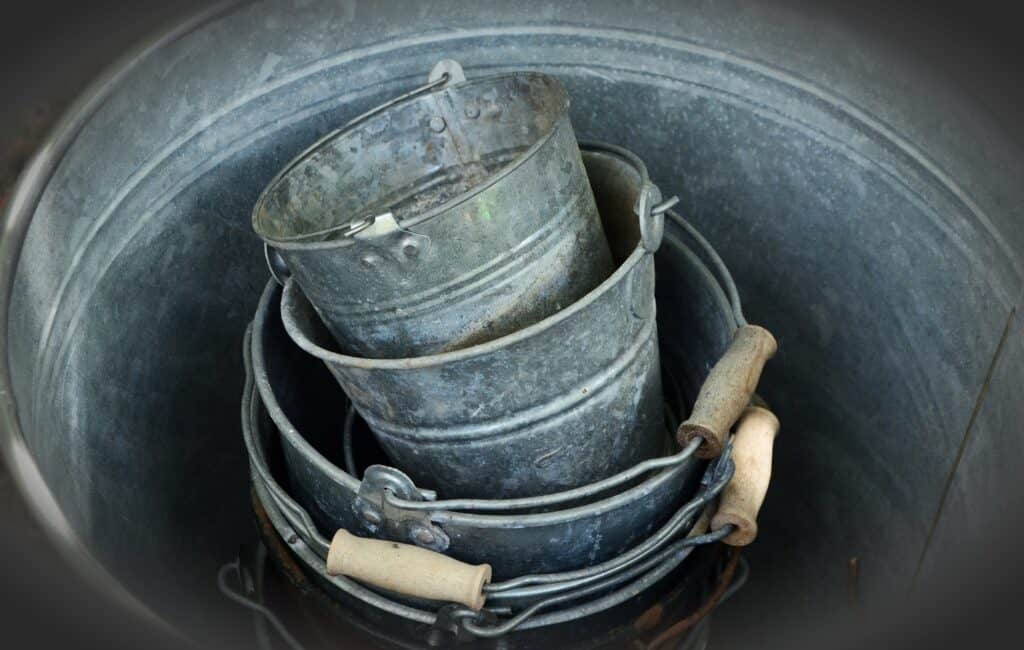How you equip for your retirement today will oftentimes dictate your future financial well-being. Preparing today will help determine your future comfort. But once you’ve accumulated a decent nest egg, what’s the best way to access those retirement funds to make them last? Well, many propose trying the bucket strategy to maximize your investments to last as long as you do!
Although the recent pandemic has decreased the average life expectancy in recent years, we are still living longer than previous generations. This means that our finances must endure for longer amounts of time.
And of course, there are many theories out there on how to protect your capital. There is the famous 4% rule which dictates that you can withdraw 4% annually from your retirement funds, adjusted each year for inflation. This will, hopefully, enable your money to last over an expected 30-year projected retirement. For instance, if you saved up a million dollars for retirement, you could withdraw $40,000 in that first year.
But there are many out there who argue that this strategy is faulty, and you could run out of money too soon because of the risk of severe market declines. Some are even proposing a new 3% rule instead which means less money to live on in retirement.
So, What Is The Bucket Strategy?
So, how can you instead save for retirement and eventually start withdrawing funds that many proponents say are safer than this 4% rule? What’s out there that may offer a bit more protection from market volatility and the ever-insidious effects of inflation?
It’s called the Bucket Strategy and it involves putting your money into three allocations (or buckets) that cover short-term expenses as well as intermediate and long-term needs later on. Let’s examine this a bit closer.
Short-Term Bucket

This consists of savings’ vehicles such as a high interest savings account or money market accounts. When you need this money, it’s there rain or shine. No worries from market crashes. This money is purposefully kept out of the market.
Intermediate Bucket
This bucket looks out beyond the 2-year mark. Typically, many recommend using this for the next 5-year mark of retirement (some say 10). Here, you’ll have “safer” (but higher yielding than the short-term bucket) investments such as bonds or other fixed income investments such as CDs. The goal, of course, is to carry you through these “interim” years. You want your accounts to have some growth but not be placed in too heavy of risky investments that would damage your long-term retirement goals.
You could go as far as “moderate” risk if you’re willing to keep a close eye on your accounts.
Long-Term Bucket
This bucket covers the years beyond the 7-12-year mark (depending on the length you prescribe for the first two buckets). Here, you want to see as much growth in your portfolio as possible. Since you won’t be touching these funds for generally a decade from the start of your retirement, you definitely want it to outpace inflation and grow.
Here, you’ll be investing in aggressive strategies such as stocks, REITS (Real Estate Investment Trusts), or even ETFs that track Indices such as the S&P 500. It’s still important to diversify your investments in this bucket: you don’t want to be too frivolous and lose money unnecessarily because you’re chasing returns. So, the goal is to be assertive but not foolish with this account.
Sequence of return risks (discussed below) are a very real threat to your retirement. The purpose of the bucket strategy is to help negate the effects of these risks. By “delaying” touching the stock market portion of your retirement funds, you’re essentially attempting to put these sequence of return risks in your favor.
Sequence of Return Risk
What is sequence of return risk? The short version answer is when you take negative returns in your stock market portfolio. Essentially, your funds will last longer if you take them later (in your elderly years) than if you took them earlier, right away just after retirement.
The basic premise is that with early losses, your account can drop precipitously. In some cases as much as 50% or more as we’ve seen in the past. Since you’re also withdrawing funds to live on, it’s extremely hard to recover from those losses. It takes a 100% gain to recover from a 50% drop. The market generally takes a while to recover those losses. All the while you’re still withdrawing funds from a severely damaged account which makes it even harder.
Two or three early negative stock market returns can severely impact your account than if you had them near the end of your retirement.
The main emphasis is on protecting your capital early on in retirement.
For instance, take a look at this scenario of identical stock market returns for 25 years in retirement where one person started withdrawing funds where the first three years were negative and the other had identical market returns (but in reverse) where the negative returns were at the end of their retirement.
When there is no withdrawal, the accounts remain equal. Start withdrawing funds to live on, however, and one person runs out of money 18 years into retirement whereas the other has 2.5x as much when they die.
The Bucket Strategy helps offset any early retirement negative years in the stock market. You don’t start withdrawing funds from your stock market portion of this portfolio until many years into the retirement cycle (thus preserving your capital making them last longer than you do!).
Summary
As always, it’s important to consult an investment professional before you implement any of these (or other) strategies. There are certainly some who say this strategy doesn’t work at all, that there are plenty of flaws so it’s important to work with a financial advisor if you’re considering this. There are certainly nuances not discussed here.
Others advocate combining the bucket strategy with the 4% withdrawal rule, intermeshing the two.
Obviously, withdrawing funds during retirement is a very individual decision. What works for one person certainly won’t work for another.
However, having some methods to choose from while sitting down with a financial advisor will give you more tools in the chest to explore. It may give you more options that can be tailor suited to your individual circumstance.
Latest posts by David the Wealthy RN (see all)
- Five Negative Aspects of the 401(k) - July 19, 2023
- How To Think About Bear Markets - April 8, 2023
- Live Paycheck to Paycheck the Right Way! - December 26, 2022

